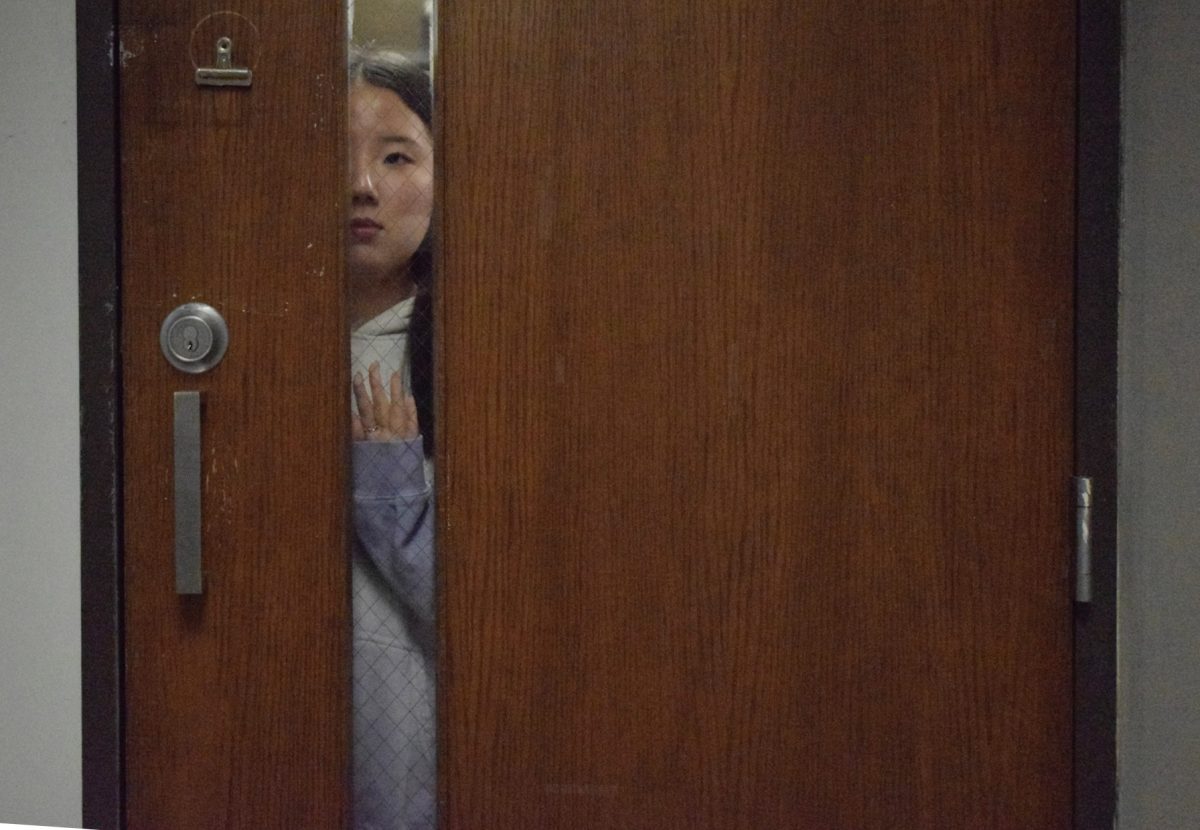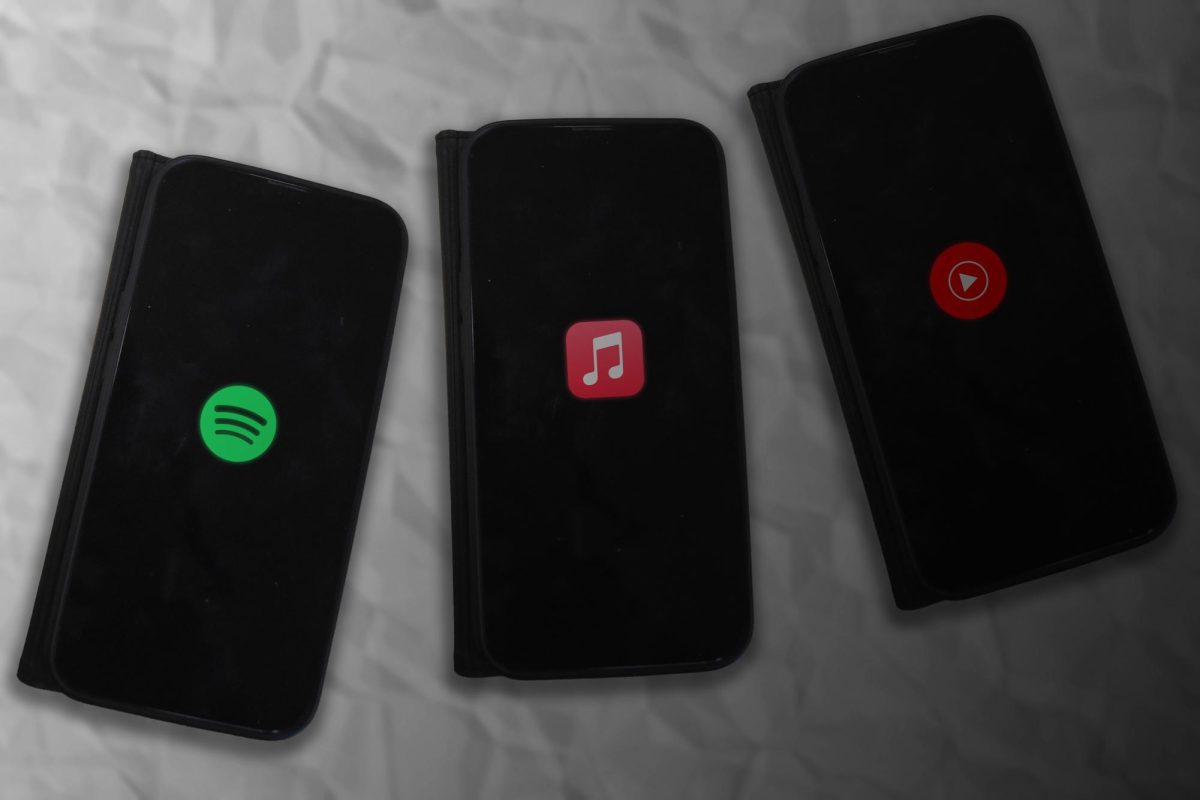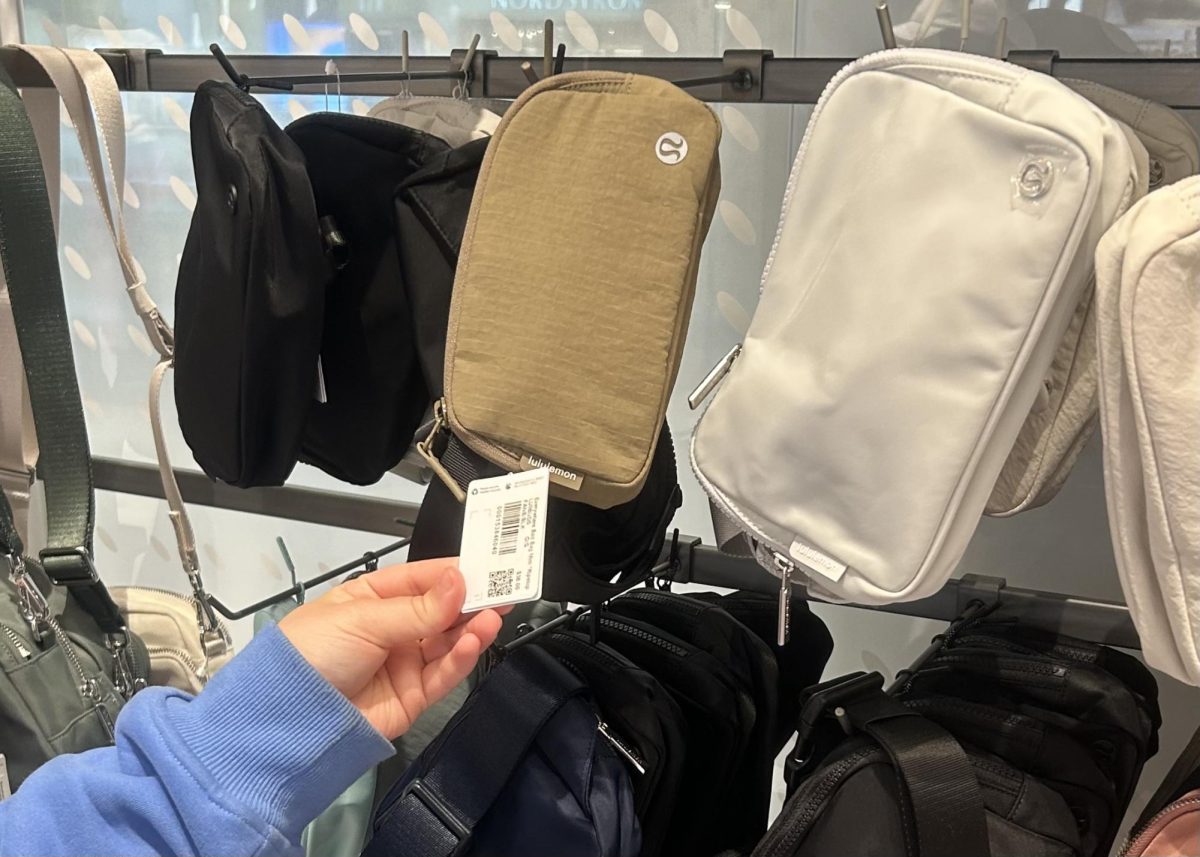Looking back at the history of fashion, several trends can be defined by a decade: babydoll dresses were a staple piece of the 1960s, bell-bottoms revolutionized the 1970s and leg warmers will take you back to the 1980s. But defining specific styles for the 1990s, 2000s and the last decade is much more difficult. The pace of trends in clothing has accelerated, leading to ultra fast-fashion.
Trends are usually considered to go through a five-stage cycle, resurging in popularity every 20 years. Take jeans, for instance. Straight “cigarette” or skinny jeans were popularized in the 1960s but didn’t reappear in mainstream fashion until the ‘80s and then again in the 2010s. The 1970s bell-bottom styles were reintroduced as flare or bootcut jeans in the late ‘90s and early 2000s. These trends resurfaced about 20 years later, following the typical cycle.
However, in this day and age, trends are cycling much faster, which raises concerns for the sustainability of the clothing industry. Emerging “microtrends” — fashion tendencies that go out of trend just months after becoming popular — are pressuring every aspect of the clothing industry, from the design table to accelerated manufacturing to product distribution and stores managing more inventory.
Returning to jeans, we are now seeing several cuts of denimwear in style: high-waisted and baggy “mom” jeans, flare and bootcut jeans, and straight/slim-fitting jeans are all considered fashionable right now. The life cycles of microtrends overlap in ways that the fashion industry has never seen before, leading to companies struggling to keep up with them. These ever-changing trends encourage companies to cut corners on their practices. And social media is driving these trends faster and faster.
Social media is inundated with videos, posts and communities romanticizing different “aesthetics.” Put any word — cottage, coquette, dark academia — in front of the suffix “-core,” and thousands of posts are dedicated to the style it encompasses online. These aesthetics not only define a style of wardrobe but also a lifestyle. In January 2023, the “coquette aesthetic —” often characterized by pastel colors, lacey and silky fabrics, and dreamy romanticism — peaked with the hashtag “#coquettecore,” at 406 million views on TikTok. At the time, the trend reached 100% interest, TikTok’s way of tracking an item’s peak popularity. Just four months later, the hashtag dropped to a mere 59%. The incoming data for the end of the month is predicted to drop even further to around 48%. As these “cores” rapidly rise in popularity and then quickly fall, they encourage a rewrite of one’s lifestyle, creating a cycle of clothing, decor and other possessions being discarded and rebought repeatedly.
When these fashion trends speed up, it changes the pace of the entire clothing and manufacturing industry, pressuring them to cut corners to keep up. Some brands like Shein, Forever 21 and H&M, known for their ultra-fast fashion, keep up with trends by pushing out clothing that can go from design to stores in two weeks. This leads to several problems. The clothing fast fashion companies produce is made incredibly quickly and sells for low prices, decreasing its quality significantly. Furthermore, these clothes are going out of style so quickly that manufacturers are forced to change products in months, if not weeks, leading to overworked employees and wasteful tendencies such as not recycling materials and increasing global emissions. To support sustainable clothing, senior Presley George often refrains from buying from these brands.
“[Fast fashion] is not sustainable because companies spend a bunch of money trying to get out these products super fast, which leads to them producing it in harmful ways, often in poor countries. That’s not cool,” George said. “I understand that the pricing is very good, and that does appeal to a lot of people — including me — but I know it’s harmful to the environment and the economy,”
These fast fashion companies provide low-cost access to clothing, which, in theory, would provide more affordable clothing. But when their lack of quality means that fast fashion clothing sometimes lasts only a few wears, these stores are no longer outlets for accessible clothing.
And while some of these fast-fashion companies have claimed that they aim to work toward sustainability and fair working conditions, their work is quickly undone when the companies are used as a cheap way to gain tons of clothing. The Instagram tag “#hauls” showcase influencers unpackaging dozens of items at strikingly low prices. Spending hundreds — if not thousands — of dollars on cheap clothing that will go out of style in a matter of months is unsustainable and an unethical way to use influence. Not to mention most of this clothing either ends up in the landfill or in thrift stores, overcrowding yet another option for affordable clothing with low-quality items.
To solve the chain of problems that arise from fashion microtrends, we need to break the cycle that keeps them alive. We need to dig a bit deeper into the root of the problem: the trends that catapult the need for such fast fashion in the first place. Instead of buying clothes straight from the link in an influencer’s TikTok bio, consider how this piece will fit in with the rest of your wardrobe. For instance, George asks herself sustainability-related questions before buying a new article of clothing.
“One thing I often do is try to think, ‘When am I going to wear this? Am I going to wear this again?’ because sometimes I see something that’s cute, but I have to ask myself if I am ever going to wear it. I try to be smart with my shopping and for my money and limit what I buy so that way I buy things that are useful,” George said. “Thinking through my decisions of buying things allows me to make spur-of-the-moment decisions that I might regret later. I could buy a really cute vest and then a week later be like, ‘This is so ugly. Why did I buy this?’ so I try to avoid that.”
If there’s a trend you’re interested in, pick out a piece of clothing that will last you, not one that will fall apart and end up in a landfill in weeks. Try to maintain your clothing, and don’t be afraid to wear it and re-wear it often. Wear styles you enjoy, whether they’re “in trend” or not.
We can also cut off microtrends by cutting off their suppliers. When you find a piece of clothing you want to buy, consider finding a more ethical source to buy it from or try to find something similar at a local thrift store. Supporting ultra-fast fashion brands only allows them to grow and continue the cycle of microtrends. Still, sustainability can be expensive, so sometimes, instead of buying differently, we can buy less. Try to re-wear and recycle your clothes instead of switching your wardrobe up so often.
Ultimately, fashion should be used to express yourself in a way you enjoy. So, when you see a new trend on your social media page, invest in it if you like it, not just because others are purchasing it at the moment. Gear fashion toward your interests, not the internet.



![Sophomore Maryem Hidic signs up for an academic lab through Infinite Campus, a grading and scheduling software. Some students enjoyed selecting their responsive schedule in a method that was used school-wide last year. “I think it's more inconvenient now, because I can't change [my classes] the day of, if I have a big test coming and I forget about it, I can't change [my class],” sophomore Alisha Singh said.](https://pwestpathfinder.com/wp-content/uploads/2025/10/DSC_0012-1200x801.jpg)
![Senior Dhiya Prasanna examines a bottle of Tylenol. Prasanna has observed data in science labs and in real life. “[I] advise the public not to just look or search for information that supports your argument, but search for information that doesn't support it,” Prasanna said.](https://pwestpathfinder.com/wp-content/uploads/2025/10/DSC_0073-2-1200x800.jpg)
![Junior Fiona Dye lifts weights in Strength and Conditioning. Now that the Trump administration has instituted policies such as AI deregulation, tariffs and university funding freezes, women may have to work twice as hard to get half as far. "[Trump] wants America to be more divided; he wants to inspire hatred in people,” feminist club member and junior Clara Lazarini said.](https://pwestpathfinder.com/wp-content/uploads/2025/05/Flag.png)
![As the Trump administration cracks down on immigration, it scapegoats many immigrants for the United States’ plights, precipitating a possible genocide. Sophomore Annabella Whiteley moved from the United Kingdom when she was eight. “It’s pretty scary because I’m on a visa. When my visa expires next year, I’m not sure what’s going to happen, especially with [immigration] policies up in the air, so it is a concern for my family,” Whiteley said.](https://pwestpathfinder.com/wp-content/uploads/2025/05/DSC_0077-7copy.jpg)
![Shifting global trade, President Donald Trump’s tariffs are raising concerns about economic stability for the U.S. and other countries alike. “[The tariffs are] going to pose a distinct challenge to the U.S. economy and a challenge to the global economy on the whole because it's going to greatly upset who trades with who and where resources and products are going to come from,” social studies teacher Melvin Trotier said.](https://pwestpathfinder.com/wp-content/uploads/2025/05/MDB_3456-1200x800.jpg)



![Some of the most deadly instances of gun violence have occurred in schools, communities and other ‘safe spaces’ for students. These uncontrolled settings give way to the need for gun regulation, including background and mental health checks. “Gun control comes about with more laws, but there are a lot of guns out there that people could obtain illegally. What is a solution that would get the illegal guns off the street? We have yet to find [one],” social studies teacher Nancy Sachtlaben said.](https://pwestpathfinder.com/wp-content/uploads/2025/01/DSC_5122-1200x800.jpg)

![After a thrilling point, senior Katie Byergo and junior Elle Lanferseick high-five each other on Oct. 8. With teamwork and camaraderie, Byergo worked together in the game against Lafayette High School. “[Byergo’s] is really positive with a good spirit,” Lanferseick said. “I set her [the ball] and she hits it [or] gets the kill.”](https://pwestpathfinder.com/wp-content/uploads/2025/10/DSC_9349-1-e1761159125735-1200x791.jpg)
![Focused on providing exceptional service, sophomore Darsh Mahapatra carefully cleans the door of a customer’s car. Mahapatra has always believed his customers deserve nothing less than the best. “[If] they’re trusting us with their car and our service, then I am convinced that they deserve our 100 percent effort and beyond,” Mahapatra said.](https://pwestpathfinder.com/wp-content/uploads/2025/10/DSC_0018-1200x800.jpg)
![Sophomore Aleix Pi de Cabanyes Navarro (left) finishes up a soccer game while junior Ava Muench (right) warms up for cross country practice. The two came to Parkway West High School as exchange students for the 2025-2026 school year. “The goal for the [exchange] program is to provide opportunities for both Parkway students and our international exchange students to learn about other cultures, build connections and become confident, capable, curious and caring — Parkway’s Four C’s — in the process,” Exchange Program Lead Lauren Farrelly said.](https://pwestpathfinder.com/wp-content/uploads/2025/10/Feature-Photo-1200x800.png)
![Leaning on the podium, superintendent Melissa Schneider speaks to Parkway journalism students during a press conference. Schneider joined Parkway in July after working in the Thompson School District in Colorado. “My plan [to bond with students] is to get things on my calendar as much as possible. For example, being in [classes] is very special to me. I am trying to be opportunistic [meeting] kids [and] being in [the school] buildings. I have all the sports schedules and the fine arts schedules on my calendar, so that when I'm available, I can get to them,” Schneider said.](https://pwestpathfinder.com/wp-content/uploads/2025/09/IMG_5425-1200x943.jpeg)
![Gazing across the stage, sophomore Alexis Monteleone performs in the school theater. The Monteleone family’s band “Monte and the Machine” has been releasing music since 2012, but Alexis started her own solo career in 2024 with the release of her first single, Crying Skies. “My whole family is very musical, [and I especially] love writing [songs with them],” Monteleone said.](https://pwestpathfinder.com/wp-content/uploads/2025/09/DSC7463-1200x798.jpg)

![Leaping through the air, senior Tyler Watts celebrates his first goal of the season, which put the Longhorns up 1-0 against the Lafayette Lancers. Watts decided to play soccer for West for his last year of high school and secured a spot on the varsity roster. “[Playing soccer for West] is something I had always dreamed of, but hadn’t really had a good opportunity to do until now. It’s [really] fun being out [on the field], and I’m glad I decided to join the team. It’s just all about having fun with the boys and enjoying what time we have left together,” Watts said.](https://pwestpathfinder.com/wp-content/uploads/2025/09/DSC_1951-1200x855.jpg)


![Pitching the ball on Apr. 14, senior Henry Wild and his team play against Belleville East. Wild was named scholar athlete of the year by St. Louis Post-Dispatch after maintaining a high cumulative GPA and staying involved with athletics for all of high school. “It’s an amazing honor. I feel very blessed to have the opportunity to represent my school [and] what [it] stands for,” Wild said.](https://pwestpathfinder.com/wp-content/uploads/2025/05/unnamed-6-1200x714.jpg)

Serena Liu • Sep 10, 2023 at 9:43 am
Amazing job Emily! This is so well-written and SO COOL!!!
Elle Rotter • Sep 7, 2023 at 1:47 pm
Emily, this is such a well-written article! I loved searching through decades of jeans on your interactive graphic as well! I learned so much from this article. Keep up the great work!
Emily Early • Sep 7, 2023 at 6:21 pm
Thank you, Elle! You’re the sweetest.